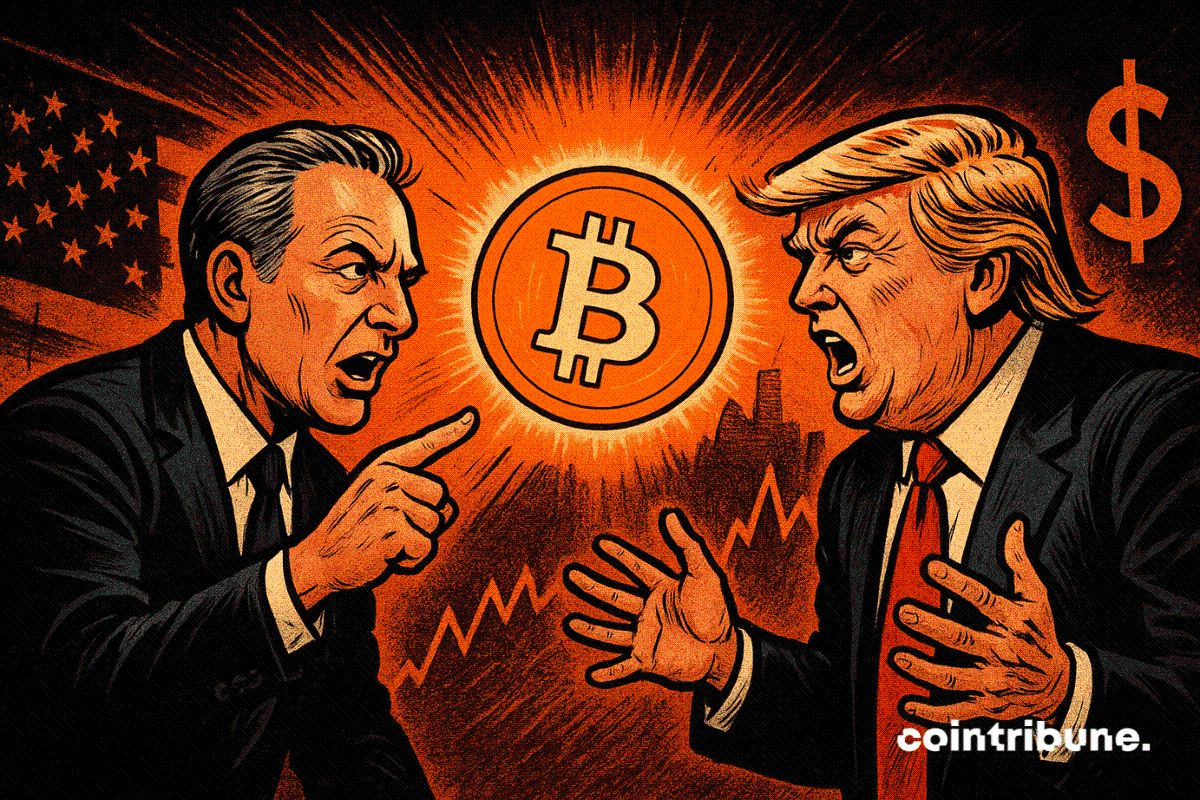Trump 401k order to drive up to $122 billion into Bitcoin, Ethereum through default flows
President Donald Trump signed an order on Aug. 7 allowing crypto in 401(k) plans, subject to agency rulemaking.
The directive tells the Labor Department, the SEC, and Treasury to revisit constraints on plan menus, opening the door for defined contribution plans to add sleeves tied to Bitcoin and ether through pooled vehicles.
The focus now is on the size of the default crypto allocations and the number of plans that implement them, since those factors will determine actual investment flows more than the policy announcement itself.
According to the Investment Company Institute, defined contribution (DC) assets stood at $12.2 trillion on March 31, with $8.7 trillion in 401(k)s. That base means even a 0.10% default inside qualified default investment alternatives, such as target date funds or collective investment trusts, would theoretically amount to $12.2 billion if adopted across the DC universe.
A quarter of plans deploying a 0.25% sleeve would equate to roughly $7.6 billion in structural bids sourced from payroll contributions and employer matches. The size of these modeled flows turns on two levers that plan sponsors control, the default percentage and the share of plans that implement it.
The policy context matters for fiduciaries. On May 28, the Labor Department rescinded its 2022 crypto compliance release that had warned fiduciaries to exercise “extreme care,” removing a key chill around menu design, per the agency’s release. The new order layers on top, instructing staff to craft avenues for access within ERISA rules.
As reported, the work now shifts to guidance and product plumbing, including how DC plans can hold crypto via regulated wrappers and how recordkeepers map those positions in plan portals.
Distribution will run through defaults, where most dollars live. Target date funds dominate participant flows and house the qualified default for many plans. As reported last month, large managers have already begun adding private-market sleeves to new TDF designs.
That same structure can host a small crypto sleeve inside a diversified glide path, and the paycheck cadence turns that sleeve into a steady primary-market bid for the underlying ETFs that hold spot Bitcoin or Ethereum. The result goes beyond a single surge toward a programmatic flow that arrives on payroll cycles and rebalancing dates.
How much could 401(k)s bring to crypto?
The glide path math frames realistic ranges for 2026. Using ICI’s DC base, a 0.10% default across 10% of assets points to about $1.22 billion of crypto demand. A 0.50% default across 25% of assets points to about $15.3 billion, while a 1.00% default across half the market would reach about $61 billion.
| 10% of DC assets | $1.22B | $3.05B | $6.10B | $12.20B |
| 25% of DC assets | $3.05B | $7.63B | $15.25B | $30.50B |
| 50% of DC assets | $6.10B | $15.25B | $30.50B | $61.00B |
| 100% of DC assets | $12.20B | $30.50B | $61.00B | $122.00B |
Modeled flows using $12.2T US defined-contribution base; values are theoretical and illustrative.
If sponsors weight sleeves toward Bitcoin at launch, Ethereum still absorbs a measurable share once ETH ETFs are included on platforms, though the split depends on investment policy statements and recordkeeper support. These figures are mechanical translations of defaults and adoption into dollars, not forecasts of market impact.
Risk controls and fees remain core to the debate. Per proponents view more menu choice as portfolio diversification, while critics warn that valuation, liquidity and costs require careful design for a retirement context. Kiplinger’s overview adds that sponsors may route exposure through managed accounts or TDFs rather than stand-alone options, a choice that centralizes due diligence and participant communication.
For crypto markets, the mechanism matters. If plans fund sleeves through spot ETFs, new contributions translate to primary creations when shares exceed inventory, which feeds through to underlying coin demand via authorized participants.
That transmission channel ties adoption inside DC plans to the ETF primary market rather than secondary swings, which is why the default percentage embedded in TDFs and CITs will matter more than menu headlines.
The next milestones sit with agency guidance, product filings, and recordkeeper integrations, then plan committee updates to investment policy statements. The flows, if implemented, would arrive on a schedule, and the order moves the 401(k) discussion from permissions to allocation math.
The post Trump 401k order to drive up to $122 billion into Bitcoin, Ethereum through default flows appeared first on CryptoSlate.
Disclaimer: The content of this article solely reflects the author's opinion and does not represent the platform in any capacity. This article is not intended to serve as a reference for making investment decisions.
You may also like
Witness the Dynamic Shifts in Bitcoin and Altcoin ETFs
In Brief Bitcoin and altcoin ETFs witness dynamic shifts in inflows and outflows. XRP and Solana ETFs attract notable investor attention and activity. Institutions explore diversified crypto ETFs for strategic risk management.

Peter Schiff Clashes With President Trump as Economic and Crypto Debates Intensify

Bitcoin Cash Jumps 40% and Establishes Itself as the Best-Performing L1 Blockchain of the Year

Bitcoin Price Plummets: Key Reasons Behind the Sudden Drop Below $88,000
